Disclaimer: I have a small bag of $TANGO
As someone who helped launch the first-ever Balancer’s LBP and wrote the first case study, I am always interested in learning how other projects launch their tokens. Contango’s TGE has recently attracted my attention.
In this article, I will explain Contango, the utilities of its native token, and what’s great about its TGE.
What’s Contango and its $TANGO
To understand why this TGE is noteworthy, let’s first examine what Contango offers and the role of its token.
Contango v2 is a DeFi application that enables users to create leveraged positions on money markets. Most users use it to earn leveraged yields, while some make directional trades (see screenshot below).
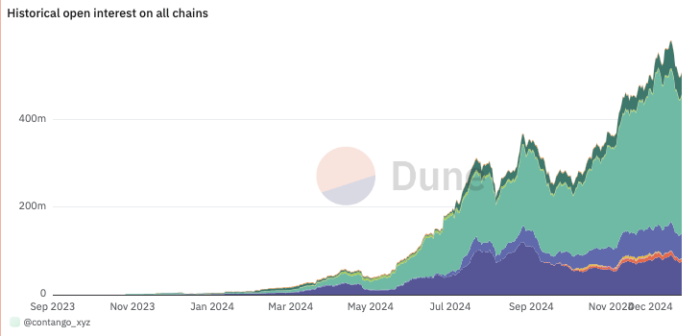
$TANGO is Contango’s native token and Contango shares 100% of its revenue with people who stake LP tokens with wstETH/$TANGO on Balancer. This pool on Balancer is an 80/20 one, with a lower impermanent loss when $TANGO appreciates against wstETH. Like other veTokens, the longer these users voluntarily lock up their LP tokens (up to one year), the more revenue they will receive proportionately.
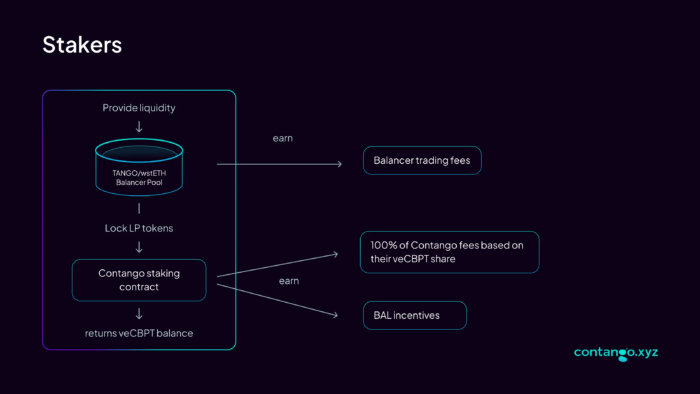
What Makes Its TGE Great
With this token structure in place, several aspects of Contango’s TGE are well-designed.
Product-Market Fit First
In case you guys don’t know, Contango v1 was a futures trading platform with expiration dates. However, there was no demand as the crypto market likes perpetual contracts, so they pivoted to the current offering.
The following is the TVL history of Contango v1.

Instead of launching a token prematurely, they postponed their TGE until they had a product-market fit with Contango v2 (see below).
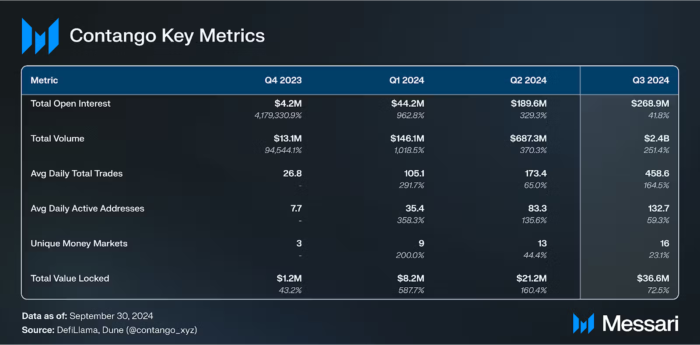
Everyone Has the Same Price
The Contango team ran a fixed-price sale on Fjord for a week for their token at the same price as their previous round. I know, shocking. $3M was raised in less than 4 hours, and the buyers could claim their tokens about a week later.
This token sale effectively forms a bottom for the token price, as no one in the world could, in theory, get a price lower than $0.045. It also creates a lot of goodwill, as the only way to build a community is to make them rich together.
One thing worth pointing out is that some people denominate their PnL in ETH, and they bought $TANGO with ETH. Given that the price of ETH was lower when $TANGO became claimable on November 4, 2024, those people sold $TANGO to get more ETH, making $TANGO reach as low as $0.032. In hindsight, that was the perfect time to acquire a bag of $TANGO.
No Free Tokens
In 2024, points were the meta for crypto projects to attract and retain users. Contango also uses one and distributes points weekly. The earlier you use the platform, the more points there are that week. The team also tweaked the reward formula to retain users and used a leaderboard to nudge users to fight for their positions.
Contango’s point system is unique because you don’t receive free tokens with points. Instead, the points are the option tokens to buy $TANGO at a discount. And the paid amount will further extend the team’s runways whenever someone exercises their option tokens. Here are the discount breakdown for each price:
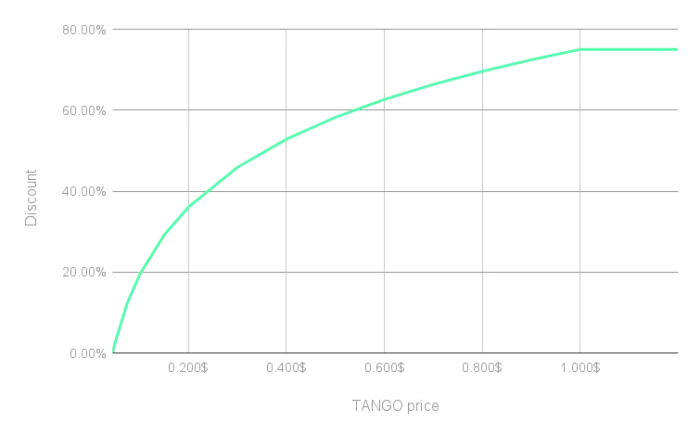
This scheme reinforces the idea that $0.045 is the floor price, as exercising your call option below $0.05 doesn’t make sense.
Clear Timeline
Immediately after the token sales, the Contango team released a timeline for token-related activities for the following week, an excellent way to make buyers feel comfortable.
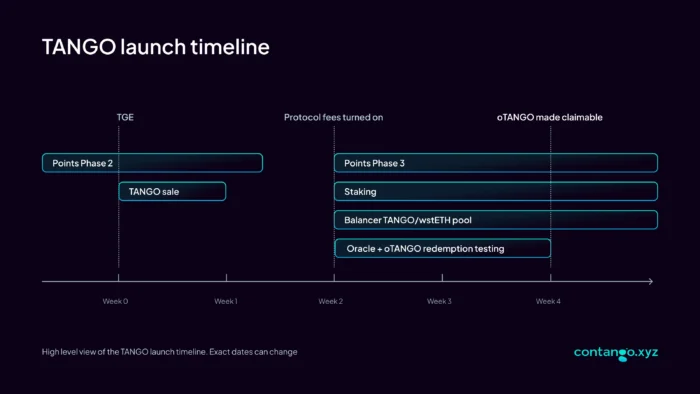
Although staking was like one day behind the schedule, and people were driving devs nuts with “wen staking”:

Summary
With these carefully planned elements in place, the early results of the TGE have been telling.
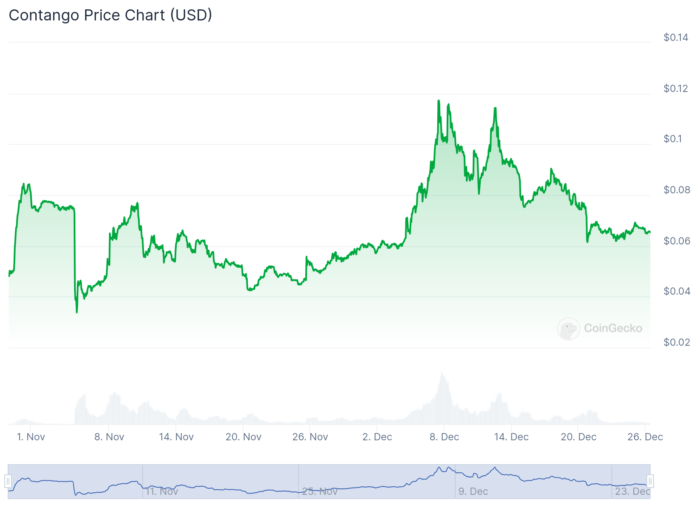
Despite the initial dips brought by panic sellers and the buyers who denominate their profits in ETH, the price of $TANGO has been going to the top-right corner since Fjord buyers can claim their shares. $TANGO has now been up 35% above its token sale price, albeit only one week in circulation.
The fee switch has been enabled on November 6, 2024, two days after tokens were circulated. You now pay 21.25 bps for directional trades, e.g., using USDC to long wBTC, and 4.25 bps for correlated trades, e.g., a wstETH looped position with wstETH as the collateral – both were free previously.
It’s 11th November 2024 when I’m writing this article, and it’s still too early to tell the impact of the fee switch. However, the team must innovate to provide more value to justify this charge – as we can see repeated complaints like the one below on their Discord now:

Due to the open-source nature of DeFi, competitors will soon be asking Contango for this dance. The music is playing, and there’s no time for missteps. It takes two to tango, but first, you have to lead.
